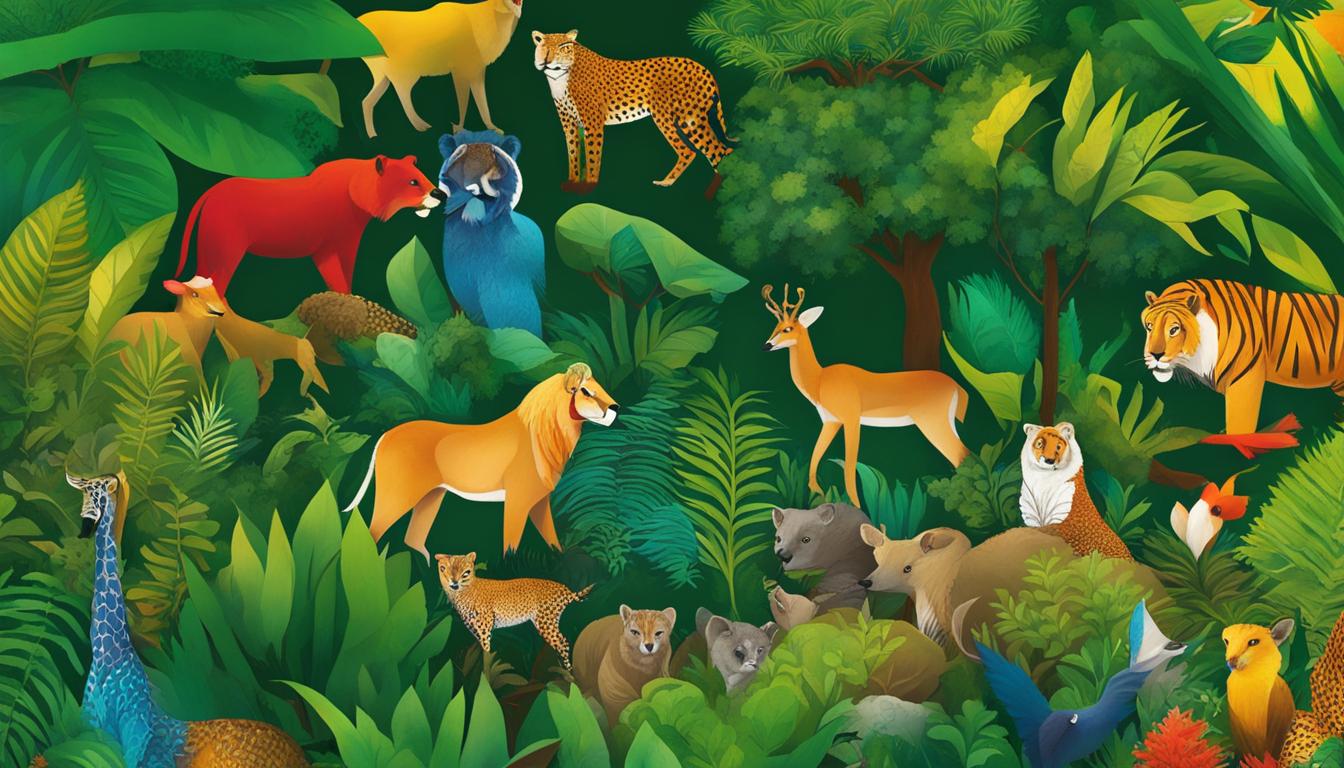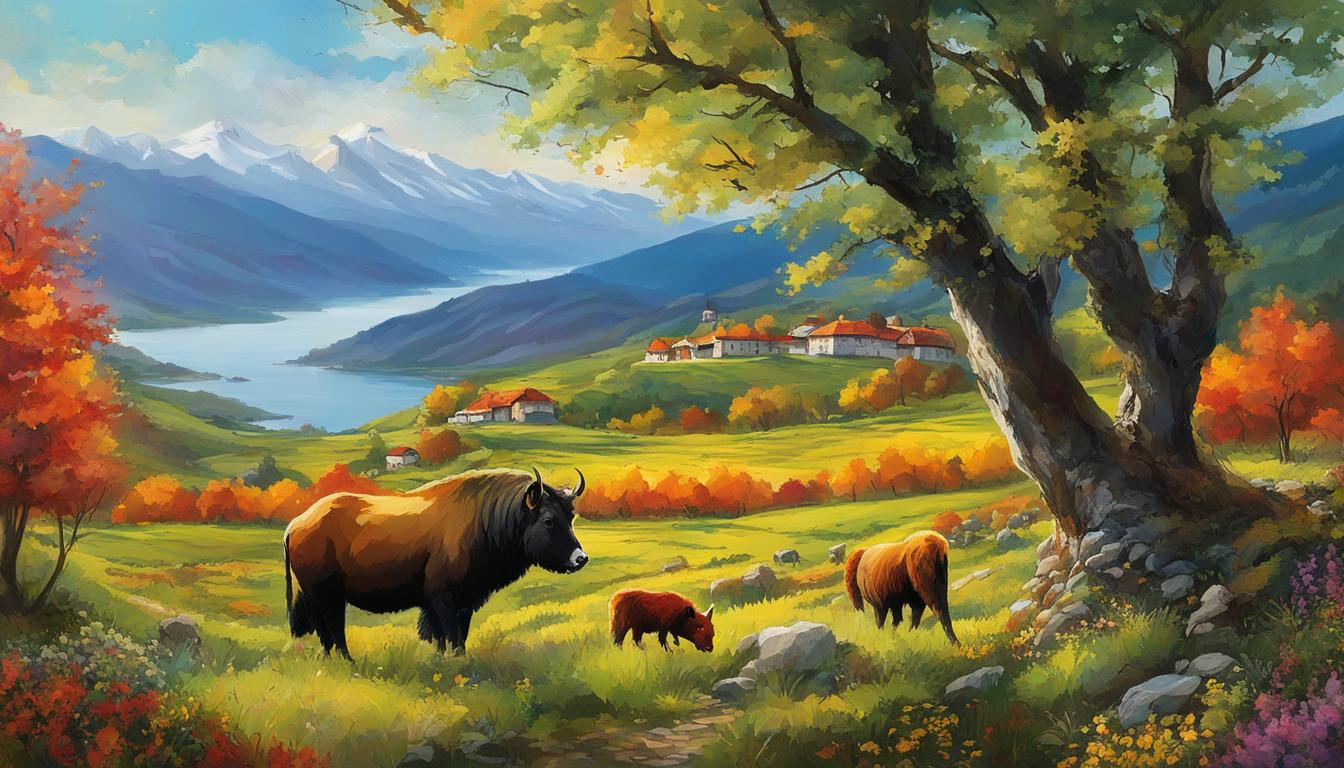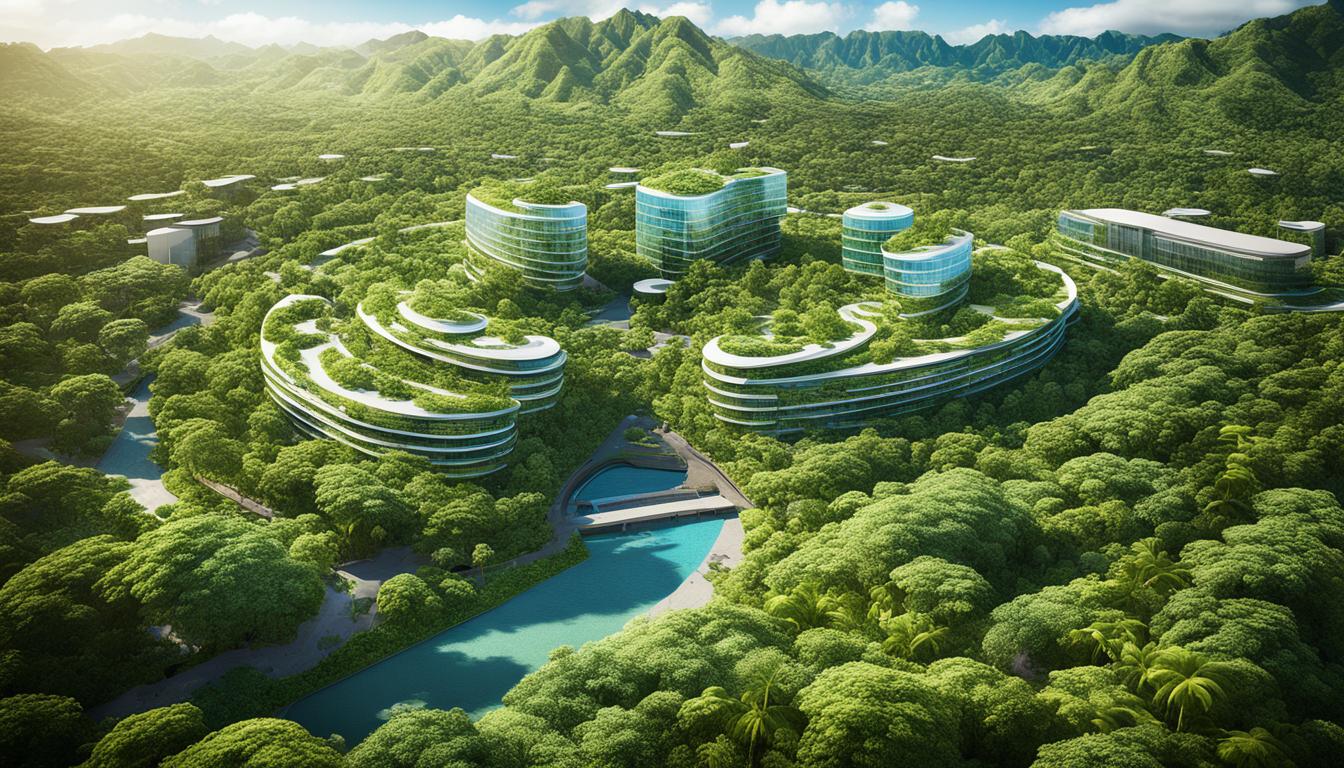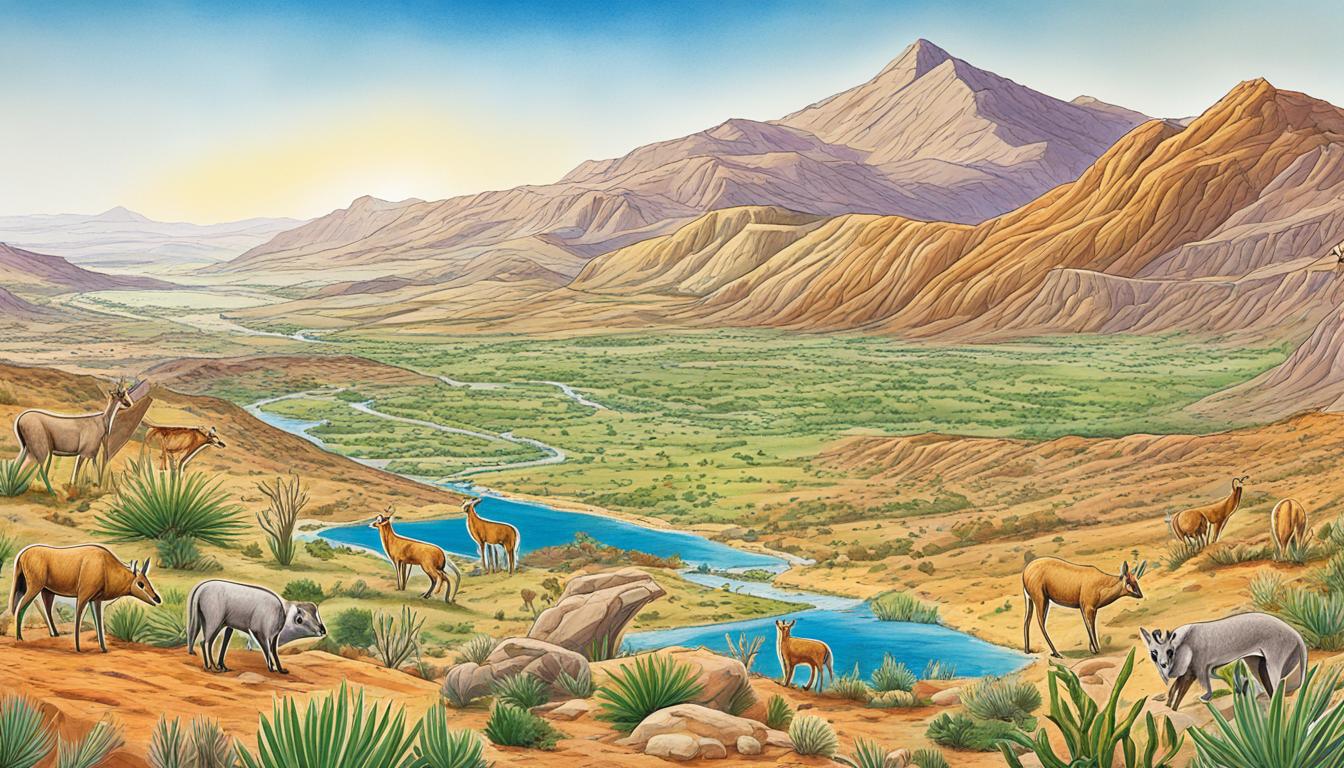North Korea Biodiversity: Animal and Plant Species and What Is Under Threat
North Korea boasts a rich and diverse biodiversity, with a range of animal and plant species that thrive within its unique ecosystems. From the snow-capped mountains to the picturesque coastlines, the country is home to a wealth of flora and fauna that make it a biodiversity hotspot.
Conservation efforts are vital in North Korea to protect its remarkable wildlife and preserve the delicate balance of its ecosystems. With increasing threats such as habitat loss, climate change, and the presence of invasive species, safeguarding the environment is crucial for the future of North Korean wildlife.
In this article, we will explore the North Korean ecosystem, highlight the endangered species, and discuss the conservation and environmental protection efforts in the country. We will also delve into the significance of the demilitarized zone (DMZ) and how it has become a sanctuary for nature amidst the political tension.
Key Takeaways:
- North Korea is home to diverse animal and plant species, making it a biodiversity hotspot
- Conservation efforts are crucial to protect North Korean wildlife and maintain the delicate balance of ecosystems
- The demilitarized zone (DMZ) serves as a haven for unique wildlife amidst political tensions
- Habitat loss, climate change, and invasive species are major threats to North Korea’s biodiversity
- Efforts are being made to preserve and restore the country’s ecosystems and wildlife
- International cooperation plays a significant role in the conservation of North Korean biodiversity
The Demilitarized Zone (DMZ): A Haven for Nature in North Korea
The demilitarized zone (DMZ) that stretches along the border between North and South Korea has become a haven for nature. Few people are allowed to enter this heavily militarized area, which has allowed the environment to recover and thrive undisturbed. The DMZ is home to rare animal species such as bears, cranes, deer, and otters that are rarely found in other parts of the Korean peninsula. Google has released 360-degree images of the DMZ on Google Street View, providing a rare glimpse into this restricted part of the world.
Unique Wildlife in the DMZ
The DMZ is a sanctuary for a variety of wildlife, with its pristine environment providing a haven for rare species. Among them are:
- Bears
- Cranes
- Deer
- Otters
These animals have found a safe refuge within the DMZ, away from human disturbance and the pressures of development. The remote and inaccessible nature of the zone has allowed them to thrive and propagate.
“The DMZ represents an unparalleled living museum of North Korean biodiversity. It is a testament to the resilience of nature when given the opportunity to recover.”
Preserving the DMZ Ecosystem
Recognizing the ecological significance of the DMZ, conservation efforts are underway to protect its unique ecosystem. Researchers conduct wildlife surveys and monitor the biodiversity within the DMZ to assess the health and populations of the rare species that inhabit the area. Remote cameras have captured elusive animals, providing valuable insights into their behavior and distribution.
Efforts are also being made to protect the habitats of the endangered species within the DMZ. These conservation measures aim to ensure the long-term survival of these rare creatures and maintain the biodiversity hotspots that exist within the zone.
The Importance of International Cooperation
Conserving the DMZ’s biodiversity requires international cooperation. Collaborative efforts between North and South Korea, as well as partnerships with international conservation organizations, have played a crucial role in preserving the unique ecosystem of the DMZ.
The DMZ serves as a symbol of hope, demonstrating that even in a heavily militarized area, nature can thrive and provide a sanctuary for rare and endangered species. It is a testament to the power of conservation and the resilience of nature.
Kumgang Mountain: A Diverse Ecosystem in North Korea
Kumgang Mountain in North Korea is renowned for its remarkable biodiversity and diverse ecosystem. Nestled in the Korean peninsula, this mountain is home to a rich variety of plant and animal species, including many that are native to the region. The mountain’s unique topography and varying altitudes create a habitat that supports the coexistence of alpine, forest, farmland, freshwater, and marine ecosystems.
The flora and fauna found in Kumgang Mountain are a testament to the resilience and adaptability of life in North Korea. The mountain’s lush forests are teeming with a wide array of tree species, ranging from towering pines and oaks to delicate flowers and ferns that carpet the forest floor. The diverse flora provides a vital foundation for the local ecosystem, supporting a thriving community of wildlife.
The fauna in Kumgang Mountain is equally impressive. Mammals such as bears, deer, and otters roam freely, while a variety of bird species grace the skies above. The pristine freshwater streams harbor a diverse range of fish and amphibians, contributing to the mountain’s vibrant ecosystem.
However, like many areas around the world, Kumgang Mountain is not without its environmental challenges. Pollution from human activities, including industrialization and agriculture, poses a threat to the delicate balance of the mountain’s ecosystem. Deforestation, driven by logging and urban expansion, further exacerbates these challenges.
Recognizing the importance of preserving this unique ecosystem, North Korea has implemented various conservation measures. Tree planting programs have been implemented to restore and protect the mountain’s forests. Furthermore, the country actively participates in international environmental projects and collaborates with international organizations to promote biodiversity conservation.

The image above captures the breathtaking beauty of Kumgang Mountain, showcasing the lush greenery and serene landscapes that make it a true gem of North Korea’s biodiversity. Through concerted efforts in conservation and environmental protection, North Korea aims to ensure the preservation of Kumgang Mountain’s diverse ecosystem for generations to come.
The State of Biodiversity in North Korea
The profusion of animal and plant species in North Korea highlights the country’s rich biodiversity. However, there is growing concern as a significant percentage of these species are endangered, vulnerable, rare, or in decline. The 5th National Report on Biodiversity of DPR Korea sheds light on the state of biodiversity in the country, emphasizing the need for conservation efforts.
The report reveals that North Korea encompasses a diverse range of ecosystems, including alpine regions, forests, farmlands, freshwater bodies, and marine environments. Each ecosystem harbors its own unique set of species, contributing to the overall biodiversity of the country.
Efforts are being made to address the threats to biodiversity and protect the unique flora and fauna of North Korea’s ecosystems. Conservation initiatives focus on preserving endangered species, restoring habitats, and raising awareness about the importance of biodiversity conservation.
However, there is still much work to be done to safeguard North Korea’s biodiversity and ensure the survival of its plant and animal species for future generations.

Endangered Species in North Korea
| Animal Species | Status |
|---|---|
| Amur Leopard | Endangered |
| Asiatic Black Bear | Vulnerable |
| Red-crowned Crane | Endangered |
| Korean Pine | Vulnerable |
| Korean Tiger | Endangered |
Environmental Challenges in North Korea
North Korea faces several environmental challenges that impact its biodiversity. These challenges include pollution, deforestation, and climate change, all of which have significant implications for the country’s diverse ecosystems.
Pollution
Pollution, particularly air and water pollution, poses a major threat to North Korea’s biodiversity. The quality of rivers and streams is deteriorating due to untreated sewage and industrial effluent. This pollution not only harms aquatic species but also disrupts the delicate balance of the entire ecosystem.

Deforestation
Deforestation is another pressing environmental challenge in North Korea. Cultivation, logging, and economic hardships have led to the clearing of vast areas of forest. This practice not only destroys habitats but also results in soil erosion, depletion, and increased flood risks. It has a detrimental effect on the overall health and stability of ecosystems.
Climate Change
Climate change is a significant concern for North Korea, impacting both its biodiversity and food security. Rising temperatures and extreme weather events affect the delicate balance of ecosystems and can lead to the loss of critical habitats. Changes in climate patterns also pose challenges for agricultural productivity, exacerbating food shortages in the country.
Efforts have been made to address these environmental challenges in North Korea. Environmental programs have been established to tackle pollution and promote sustainable development. Additionally, international cooperation plays a crucial role in addressing these issues and finding solutions to protect North Korea’s unique biodiversity.
Efforts to Protect and Restore North Korea’s Biodiversity
Despite the environmental challenges, North Korea is taking significant steps to safeguard and restore its biodiversity. The country has implemented various initiatives that focus on conservation and environmental protection.
One of the key strategies to combat deforestation is the introduction of tree planting programs. These initiatives, especially in the areas around Pyongyang and South Pyongan Province, aim to replenish the lost forest cover and promote the growth of diverse flora and fauna.
Moreover, North Korea has implemented forest restoration policies and banned cultivation on sloping areas. These measures aim to prevent erosion and landslides, which can have detrimental effects on both the environment and communities.
In addition to these efforts, the country has embraced renewable energy technologies to reduce reliance on coal and mitigate air pollution. By investing in renewable energy, North Korea is not only taking steps towards environmental sustainability but also contributing to the preservation of its biodiversity.
Furthermore, international cooperation and participation in environmental projects have played a significant role in biodiversity conservation in North Korea. Collaborative efforts with other countries and organizations have led to the exchange of knowledge, resources, and best practices, further enhancing environmental protection in the region.

The Unique Wildlife of the DMZ
The demilitarized zone (DMZ) is not only a symbol of tension between North and South Korea but also a sanctuary for rare species in the DMZ. The absence of human activity has allowed animal species rarely found elsewhere on the Korean peninsula to thrive within the DMZ. The biodiversity of the DMZ is remarkable, with a variety of animals calling it home. Some of the notable wildlife includes bears, cranes, deer, and otters. However, it is the cranes that truly stand out in the DMZ.
The DMZ is of particular importance for cranes, as birds in the DMZ have found a peaceful haven within its boundaries. In fact, seven out of the fifteen crane species in the world can be found in Korea, underscoring the significance of the DMZ for crane conservation and the maintenance of biodiversity. These magnificent birds choose to overwinter in the DMZ, taking advantage of its undisturbed environment and abundant food sources.
By providing a safe refuge for cranes and other wildlife, the DMZ plays a crucial role in preserving North Korea biodiversity. It serves as a testament to the resilience of nature in the face of conflict and highlights the potential for conservation even in challenging circumstances. The unique wildlife found within the DMZ is a reminder of the importance of peaceful coexistence between humans and nature, and the need to protect such habitats for generations to come.

Conservation Efforts in the DMZ
Conservation efforts are underway in the demilitarized zone (DMZ) to preserve its unique ecosystem. Researchers are conducting wildlife surveys and monitoring the biodiversity within the DMZ. The presence of endangered and rare species highlights the importance of conservation in this area. Remote cameras have captured elusive animals such as wildcats and yellow-throated martens, providing further insight into the wildlife thriving within the DMZ. The zone’s status as a haven for cranes and other bird species is also being recognized, with efforts to protect their habitats and promote peaceful interaction between North and South Korea.

Conclusion
The biodiversity of North Korea is a precious resource that requires immediate attention and conservation measures. Despite the numerous environmental challenges the country faces, dedicated efforts are underway to protect and restore its rich ecosystems.
One remarkable sanctuary for wildlife is the demilitarized zone (DMZ), which has flourished due to limited human activity. This unique area serves as a haven for a variety of rare and endangered species, highlighting the need for peace and nature preservation in this region of the Korean peninsula.
Through international cooperation and conservation programs, North Korea is actively working towards safeguarding its biodiversity for future generations. By prioritizing biodiversity conservation, promoting environmental protection, and continuing wildlife conservation efforts, the country aims to maintain the delicate balance of its ecosystems and protect the natural heritage of North Korea.
FAQ
What is the state of biodiversity in North Korea?
The state of biodiversity in North Korea is a matter of concern. The 5th National Report on Biodiversity of DPR Korea highlights the profusion of animal and plant species in the country. However, it also notes that a significant percentage of species are endangered, vulnerable, rare, or in decline. The report reveals that the country has a diverse range of ecosystems, including alpine, forest, farmland, freshwater, and marine ecosystems. Efforts are being made to address the threats to biodiversity and conserve the unique flora and fauna of North Korea.
What are the environmental challenges in North Korea?
North Korea faces several environmental challenges that impact its biodiversity. Pollution, particularly air and water pollution, is a significant issue, with the quality of rivers and streams deteriorating due to untreated sewage and industrial effluent. Deforestation is also a concern, driven by cultivation, logging, and economic hardships. These activities contribute to soil erosion, depletion, and increased flood risks. Climate change is another challenge, with rising temperatures and extreme weather events affecting food security in the country. Efforts have been made to address these challenges through environmental programs and international cooperation.
What efforts are being made to protect and restore North Korea’s biodiversity?
Despite the environmental challenges, North Korea has implemented various initiatives to protect and restore its biodiversity. Tree planting programs have been initiated to combat deforestation, especially in areas around Pyongyang and South Pyongan Province. Forest restoration policies and bans on cultivation of sloping areas aim to prevent erosion and landslides. The country has also invested in renewable energy technologies, reducing reliance on coal and mitigating air pollution. International cooperation and participation in environmental projects have further contributed to biodiversity conservation and environmental protection in North Korea.
Why is the Demilitarized Zone (DMZ) important for biodiversity in North Korea?
The Demilitarized Zone (DMZ) is not only a symbol of tension between North and South Korea but also a sanctuary for unique wildlife. The absence of human activity has allowed species rarely found elsewhere on the Korean peninsula to thrive within the DMZ. It is home to a variety of animals, including bears, cranes, deer, and otters. The DMZ is particularly important for cranes, with seven of the fifteen crane species in the world found in Korea. These birds overwinter in peace within the DMZ, highlighting the significance of the zone for maintaining biodiversity.
What conservation efforts are taking place in the DMZ?
Conservation efforts are underway in the demilitarized zone (DMZ) to preserve its unique ecosystem. Researchers are conducting wildlife surveys and monitoring the biodiversity within the DMZ. The presence of endangered and rare species highlights the importance of conservation in this area. Remote cameras have captured elusive animals such as wildcats and yellow-throated martens, providing further insight into the wildlife thriving within the DMZ. The zone’s status as a haven for cranes and other bird species is also being recognized, with efforts to protect their habitats and promote peaceful interaction between North and South Korea.
What is the significance of Kumgang Mountain for biodiversity in North Korea?
Kumgang Mountain in North Korea is known for its diverse ecosystem. It is home to a variety of plant and animal species, including those endemic to the region. The mountain provides a habitat for alpine, forest, farmland, freshwater, and marine ecosystems. While the environment of North Korea faces challenges such as pollution and deforestation, efforts have been made to mitigate these problems. The country has implemented tree planting programs and has participated in international environmental projects to conserve biodiversity.








